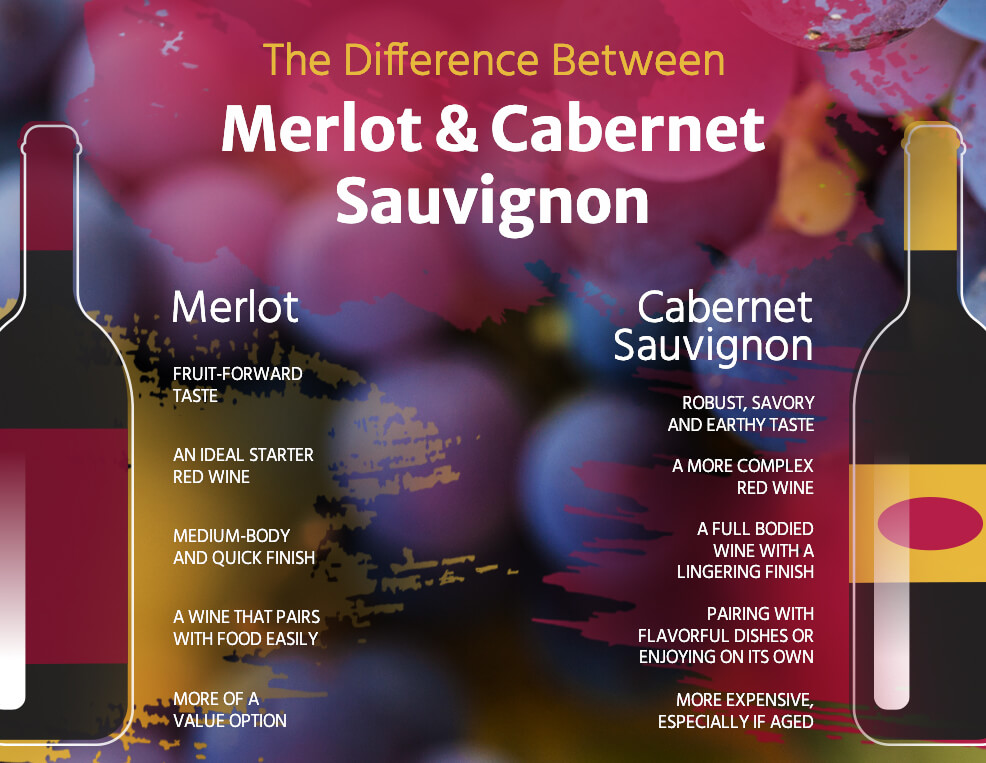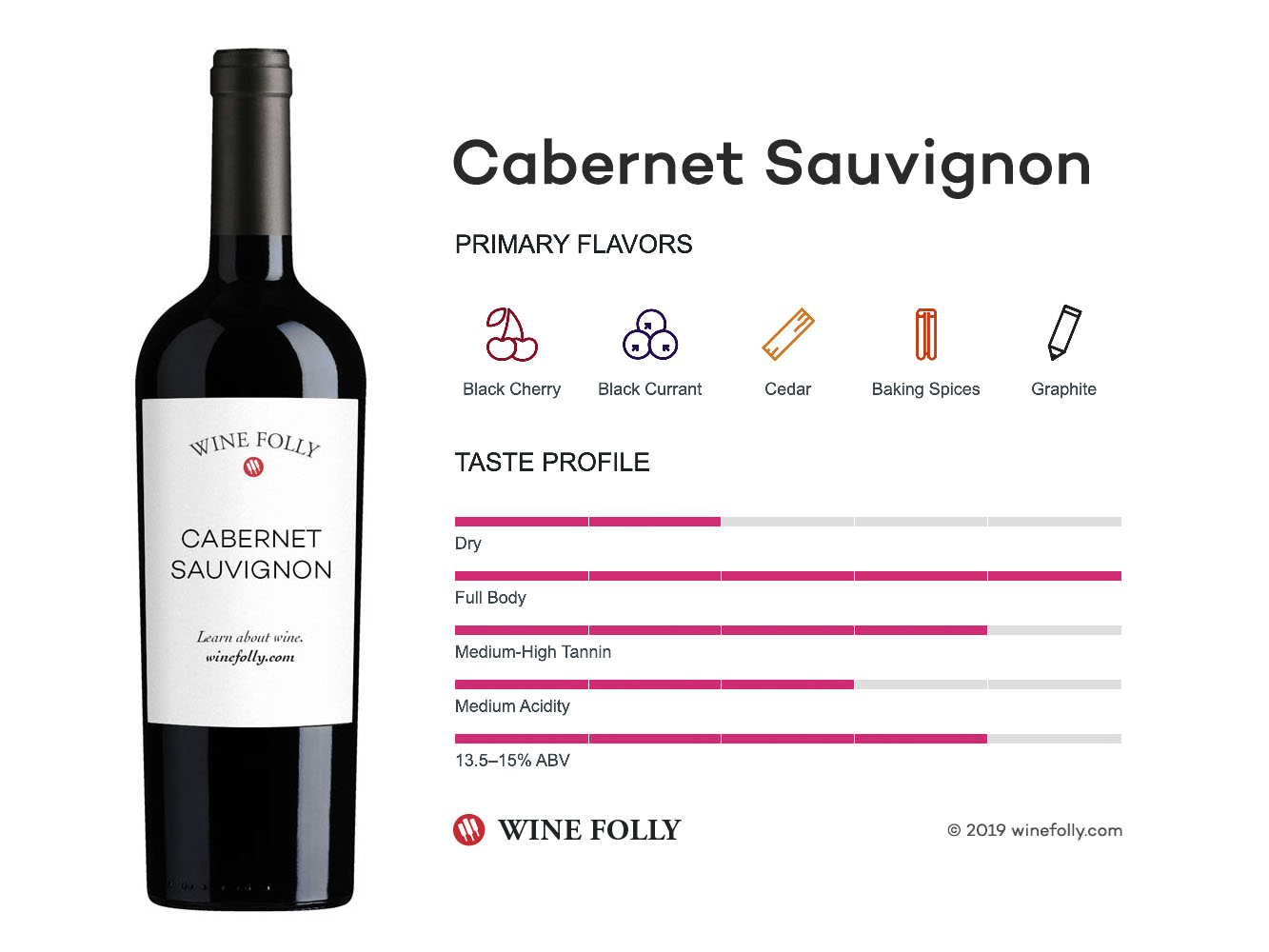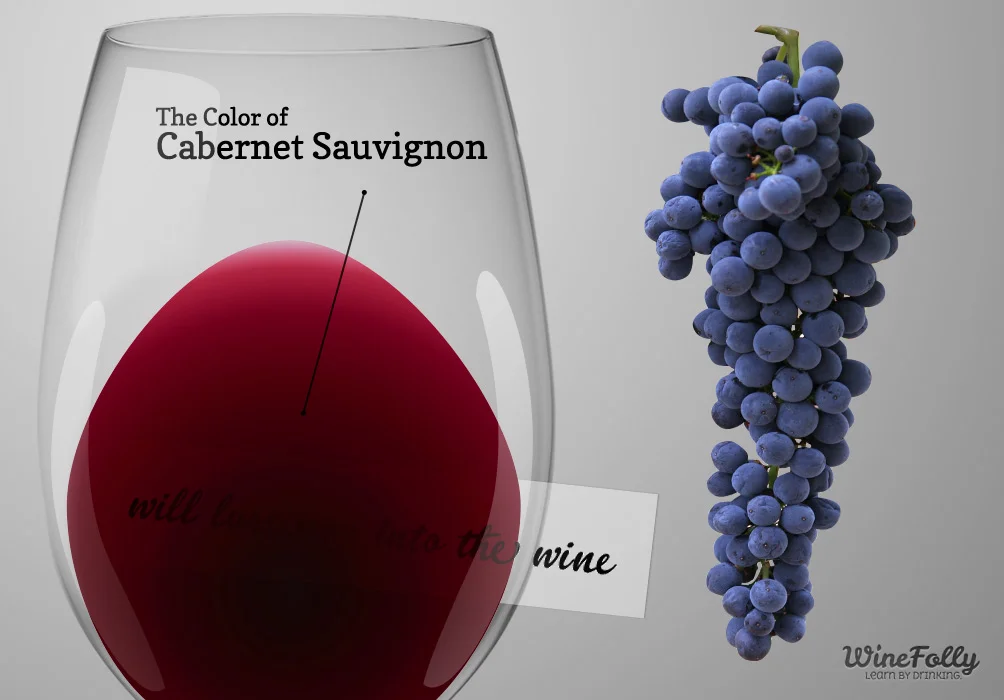Understanding Cabernet Sauvignon Wine

Cabernet Sauvignon is a widely recognized and beloved red wine variety that originated in the Bordeaux region of France. It is known for its deep color, full body, and bold flavors. Cabernet Sauvignon wines are typically high in tannins, which provide a structured and robust mouthfeel. They often exhibit notes of black fruit, such as blackcurrant and blackberry, along with hints of cedar, tobacco, and herbs. This wine is best enjoyed after several years of aging to soften its tannins and allow its complex flavors to fully develop.
Cabernet Sauvignon: Origin And Characteristics
Cabernet Sauvignon is a grape varietal that originated in the Aquitaine Department of France. It is now widely cultivated in wine regions around the world, including Bordeaux in France, Napa Valley in California, and regions in Chile and Australia. Cabernet Sauvignon is known for its deep color, full body, and bold flavors. It has firm tannins that provide a structured and robust mouthfeel. The wine often exhibits notes of black fruit such as blackcurrant and blackberry, along with hints of cedar, tobacco, and herbs. Its characteristics make it a popular choice among wine enthusiasts.
Cabernet Sauvignon Flavor Profile Explained
Cabernet Sauvignon is known for its rich and complex flavor profile. It typically showcases bold black fruit flavors such as blackcurrant and blackberry, along with notes of cedar, tobacco, and herbs. The wine often has a hint of earthiness, giving it depth and complexity. With its firm tannins and balanced acidity, Cabernet Sauvignon offers a structured and robust mouthfeel. This combination of flavors and texture makes it a perfect companion for hearty dishes and aged cheeses. Overall, Cabernet Sauvignon is a wine that is both powerful and elegant, making it a favorite among red wine enthusiasts.
Sweetness Levels In Red Wine

When it comes to red wine, sweetness levels can vary significantly. From bone-dry to lusciously sweet, red wines come in a range of sweetness levels. This is determined by the amount of residual sugar left in the wine after fermentation. Cabernet Sauvignon is typically a dry red wine, meaning it has minimal residual sugar. However, the perception of sweetness can also be influenced by factors such as fruitiness and tannin levels. It is important to note that sweetness is just one aspect of a wine’s flavor profile, and Cabernet Sauvignon is prized for its complex and robust character.
Factors Influencing Sweetness In Cabernet Sauvignon
Factors influencing sweetness in Cabernet Sauvignon include the level of residual sugar left after fermentation, fruitiness, and tannin levels. Residual sugar is the amount of sugar that remains in the wine after the yeast has converted most of the sugar into alcohol during fermentation. Higher residual sugar levels result in a sweeter wine, while lower levels contribute to a drier taste. The presence of fruitiness, such as ripe berry flavors, can also influence the perception of sweetness in the wine. Additionally, tannins, which are compounds found in grape skins and seeds, can provide a perceived sense of sweetness due to their texture and mouthfeel.
Tasting Notes: Sweetness Perception In Wine
When tasting Cabernet Sauvignon, the perception of sweetness can vary depending on individual taste preferences. While Cabernet Sauvignon is typically regarded as a dry wine, it can still offer a hint of sweetness due to its ripe fruit flavors. The balance between fruitiness and tannins plays a significant role in the perception of sweetness. The presence of ripe berries and other fruity notes can give the impression of sweetness, even though there may not be any residual sugar present. It is important to note that the sweetness level in Cabernet Sauvignon is relatively low compared to sweeter wine varieties.
Cabernet Sauvignon Tasting Experience

When tasting Cabernet Sauvignon, it is important to understand the nuances and characteristics of this renowned red wine. To fully appreciate its flavor profile, start by observing the wine’s appearance, noting its color and clarity. Next, take a moment to inhale the aromas, which can range from black fruits and spices to earthy undertones. When taking a sip, allow the wine to coat your tongue and analyze its body, acidity, and tannins. Pay attention to the flavors that emerge, such as blackberry, black currant, or even hints of chocolate. Lastly, savor the finish, noting its length and any lingering sensations. By engaging all your senses, you can truly immerse yourself in the delightful experience of tasting Cabernet Sauvignon.
How To Taste Cabernet Sauvignon Like A Pro
When tasting Cabernet Sauvignon like a pro, there are a few key steps to follow. Start by pouring a small amount of wine into a glass and observe its appearance, noting the color and clarity. Then, take a moment to inhale the aromas, paying attention to the different scents that emerge. When taking a sip, allow the wine to coat your tongue and analyze its body, acidity, and tannins. Pay attention to the flavors that come through, such as blackberry, cherry, or tobacco. Finally, savor the finish, noting its length and any lingering sensations. By following these steps, you can fully appreciate the complexities of Cabernet Sauvignon and develop your palate like a pro.
Pairing Cabernet Sauvignon With Food
Pairing Cabernet Sauvignon with food is all about finding complementary flavors that enhance the wine’s bold characteristics. The high tannins and acidity of Cabernet Sauvignon make it an excellent choice for pairing with rich, savory dishes. It pairs beautifully with red meats like steak and lamb, as well as hearty pasta dishes and aged cheeses. The wine’s herbal and earthy notes also make it a great complement to dishes featuring rosemary, thyme, and mushrooms. For a sweet and savory combination, consider pairing Cabernet Sauvignon with dark chocolate desserts. The wine’s robust flavors can cut through the richness and provide a delightful contrast.
Popular Cabernet Sauvignon Brands

There are numerous popular Cabernet Sauvignon brands that consistently produce exceptional wines. Some well-known names in the world of Cabernet Sauvignon include Caymus Vineyards, Silver Oak Cellars, Opus One, Duckhorn Vineyards, and Jordan Vineyard & Winery. These brands are recognized for their commitment to quality and their ability to consistently craft Cabernet Sauvignon wines with distinct flavors and characteristics. Whether you’re looking for a bold and full-bodied Cabernet or a more elegant and refined style, these brands offer a range of options to suit different preferences. So, explore and discover the unique offerings from these popular Cabernet Sauvignon brands.
Exploring Different Cabernet Sauvignon Brands
When it comes to Cabernet Sauvignon, there are several renowned brands that consistently deliver exceptional quality and flavor. Caymus Vineyards, Silver Oak Cellars, Opus One, Duckhorn Vineyards, and Jordan Vineyard & Winery are just a few examples of the many popular Cabernet Sauvignon brands available. Each brand has its own unique style and approach, whether it’s producing bold and full-bodied wines or more elegant and refined options. These brands have become trusted names in the wine industry, offering a diverse range of Cabernet Sauvignon wines to suit every palate.
Notable Cabernet Sauvignon Varietals
Cabernet Sauvignon is a versatile grape that is grown in numerous wine regions around the world. While the classic Cabernet Sauvignon is known for its bold flavors and full-bodied character, there are also notable varietals that showcase unique characteristics. Some of these include:
- Cabernet Franc: Often used as a blending grape, Cabernet Franc can bring a herbaceous and spicy element to Cabernet Sauvignon blends.
- Meritage: A term used to describe Bordeaux-style blends, Meritage wines often feature a blend of Cabernet Sauvignon, Merlot, Cabernet Franc, and other grape varieties.
- Carmenere: Originally from Bordeaux, Carmenere is now mainly grown in Chile and produces wines with rich plum and spice flavors.
- Petit Verdot: Usually a minor component in blends, Petit Verdot adds depth and intense color to Cabernet Sauvignon wines.
These varietals offer a unique twist to the classic Cabernet Sauvignon, providing wine enthusiasts with a diverse range of options to explore and enjoy.
Myth Busting: Is Cabernet Sauvignon Sweet?

Contrary to popular belief, Cabernet Sauvignon is not a sweet wine. It is generally considered a dry red wine, known for its bold and robust flavors. The misconception about the sweetness of Cabernet Sauvignon may stem from the misconception that all red wines are sweet. However, the sweetness levels in red wines can vary depending on factors such as grape variety, fermentation process, and residual sugar. If you’re looking for a sweet red wine, it’s best to explore other varietals such as Merlot or Zinfandel.
Debunking The Sweetness Myth Of Cabernet Sauvignon
Contrary to popular belief, Cabernet Sauvignon is not a sweet wine. Despite its rich and concentrated fruit flavors, the perception of sweetness in Cabernet Sauvignon is not due to residual sugar. The bold and robust flavors of Cabernet Sauvignon can give the impression of sweetness, but it is actually a dry red wine. The misconception likely arises from the association of red wines with sweetness in general. It’s important to recognize that the sweetness levels in red wines can vary depending on factors such as grape variety and fermentation process. So, next time you enjoy a glass of Cabernet Sauvignon, savor its depth and complexity without expecting a sweet taste.
Comparing Sweetness Levels Of Different Red Wine Varietals
When comparing the sweetness levels of different red wine varietals, it’s important to understand that sweetness can vary significantly between wines. Some red wine varietals, like Cabernet Sauvignon, are known for their dry and bold characteristics. On the other hand, varietals like Merlot and Zinfandel can exhibit a range of sweetness levels, from off-dry to semi-sweet. Pinot Noir tends to be on the drier side, while Malbec can showcase a touch of sweetness. It’s helpful to reference a sweetness scale or consult with knowledgeable sommeliers and wine professionals to determine the sweetness level of specific red wine varietals.
Conclusion

In conclusion, Cabernet Sauvignon is not traditionally considered a sweet wine. It is known for its bold flavors, high tannin content, and complexity. While some winemakers may experiment with producing slightly sweet versions of Cabernet Sauvignon, the perception of sweetness in this varietal usually comes from the ripe and concentrated fruit flavors rather than residual sugar. It is important to note that sweetness levels can vary significantly between different red wine varietals. Whether you prefer a dry or slightly sweet wine, exploring the flavor profile of Cabernet Sauvignon can be a delightful and rewarding experience.
Summary Of Cabernet Sauvignon Flavor Profile
Cabernet Sauvignon is characterized by its bold and robust flavor profile. This red wine typically exhibits flavors of blackcurrant, black cherry, and plum. It is often accompanied by notes of cedar, tobacco, and menthol, adding complexity to the wine. Cabernet Sauvignon is known for its high tannin content, which contributes to its structure and aging potential. Additionally, it showcases a medium to full body, moderate acidity, and a long, lingering finish. Overall, Cabernet Sauvignon offers a rich and intense tasting experience that appeals to wine enthusiasts seeking depth and complexity in their glass.
Tips For Enjoying Cabernet Sauvignon Wine
When it comes to enjoying Cabernet Sauvignon wine, there are a few tips to enhance your experience. First, it is recommended to decant the wine before serving, allowing it to breathe and develop its flavors. Additionally, serving Cabernet Sauvignon at the right temperature, typically between 60-65°F, will bring out its aromas and flavors. It is also important to use the right glassware, preferably one with a large bowl to allow for the wine’s aromas to be fully appreciated. Lastly, taking the time to savor each sip and appreciate the wine’s complexity will truly enhance your enjoyment of Cabernet Sauvignon.
FAQ About “is Cabernet Sauvignon Sweet: Exploring The Flavor Profile Of Red Wine”
Q: Is Cabernet Sauvignon a sweet wine?
A: Cabernet Sauvignon is typically not considered a sweet wine. It is known for its bold and dry flavor profile.
Q: What are the flavor characteristics of Cabernet Sauvignon?
A: Cabernet Sauvignon is known for its flavors of dark fruits such as blackcurrant, plum, and cherry, along with hints of vanilla, tobacco, and sometimes green bell pepper.
Q: How should Cabernet Sauvignon be served?
A: Cabernet Sauvignon is best served at room temperature, around 60-68°F (15-20°C), to allow its flavors to fully develop.
Q: What food pairs well with Cabernet Sauvignon?
A: Cabernet Sauvignon pairs well with rich and savory dishes such as grilled steak, roasted lamb, aged cheeses, and dark chocolate.
Q: Is Cabernet Sauvignon a good wine for aging?
A: Yes, Cabernet Sauvignon is known for its aging potential due to its tannic structure and acidity, which can help it develop complex flavors over time.
Q: Are all Cabernet Sauvignon wines the same?
A: No, Cabernet Sauvignon wines can vary in flavor profile depending on factors such as the region it’s from, the winemaking techniques used, and the aging process.

Let’s be honest—Parma, OH has its fair share of neighborhood joints, as do the surrounding Cleveland suburbs. There are bar food offerings, happy hour, and an enjoyable environment in which to watch the Tribe and Browns.
With Sidekicks Tavern, though, you get all that and then some. You get a bar menu, a warm staff, and a great group of fun customers to hang with.
In the words of one of our favorite regulars, Sidekicks is a hidden gem.